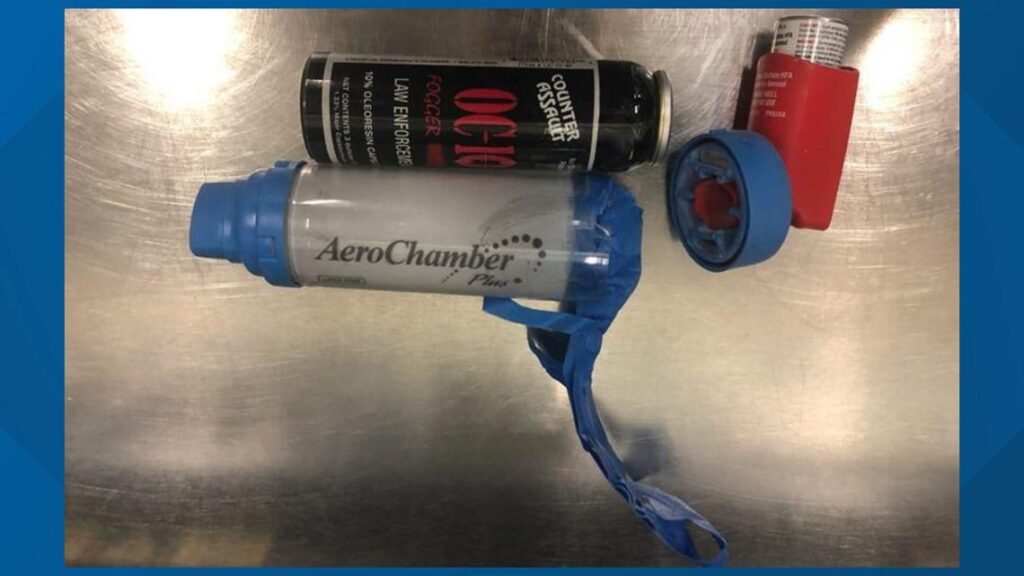Table of Contents
- Understanding Current TSA Regulations for Pepper Spray in Air Travel
- State and Airline Policies Affecting Pepper Spray Carriage on Flights
- Safe Packaging and Declaration Tips for Traveling with Pepper Spray
- Alternatives and Precautions for Personal Safety Without Pepper Spray on Planes
- In Summary
Understanding Current TSA Regulations for Pepper Spray in Air Travel
Navigating TSA rules for carrying pepper spray on flights requires clear understanding to avoid confiscation or penalties. As of 2025, TSA permits travelers to bring pepper spray in carry-on or checked baggage under strict conditions. The spray must be in a container of 3.4 ounces (100 milliliters) or less, aligning with the TSA’s liquid restrictions. Additionally, the container must have a functional safety mechanism to prevent accidental discharge during travel. Importantly, any pepper spray exceeding this size, or lacking safety features, is strictly prohibited on all flights departing from or arriving in the United States.
While TSA guidelines provide a baseline, it is equally crucial to check airline-specific policies and local laws at your destination, as regulations can vary significantly. Before packing pepper spray, keep these key points in mind:
- Size Limit: Maximum 3.4 ounces in carry-ons
- Safety Cap: Must prevent accidental discharge
- Checked Baggage: Allowed if compliant with DOT regulations
- Destination Restrictions: Some states or countries may ban or restrict pepper spray
State and Airline Policies Affecting Pepper Spray Carriage on Flights
When it comes to carrying pepper spray on flights, understanding the regulatory landscape is crucial since policies can vary significantly between states and airlines. Federal regulations in the United States generally restrict pepper spray to small, personal-sized containers with a maximum net quantity of 2 ounces (approximately 59 milliliters). However, many states impose additional restrictions or outright bans on pepper spray possession or transport, which can affect your ability to carry it when traveling through or departing from these locations. Always check local laws carefully before packing pepper spray in your carry-on or checked luggage.
Airlines also enforce specific requirements beyond government regulations, often listed in their dangerous goods or prohibited items policies. For instance, some carriers permit pepper spray only in checked baggage-not in carry-on bags-while others may prohibit it entirely regardless of size or packaging. Common airline restrictions include:
- Container size limits: Only small canisters with safety features like safety caps are allowed.
- Packaging requirements: Must be retail-packed with clear labeling indicating its purpose and ingredients.
- Declaration: Some airlines need you to declare the pepper spray at check-in or security screening.
Proactively reviewing both the departure and destination state laws, as well as the airline’s official policies, will help avoid confiscation or fines. Utilize official airline websites and government resources to verify these rules before your flight.
Safe Packaging and Declaration Tips for Traveling with Pepper Spray
When traveling with pepper spray, proper packaging is crucial to ensure safety and compliance with airline regulations. Always store your pepper spray in its original, labeled container with the safety cap securely fastened to prevent accidental discharge. Placing the item in a clear, resealable plastic bag can provide extra protection against leaks and ease the inspection process. Moreover, the container should be kept in your checked luggage rather than carry-on bags, as most airlines prohibit pepper spray in the cabin.
Declaring your pepper spray at check-in is another important step. Be transparent with airline staff about what the item is and provide any necessary documentation or certification if requested. Keep in mind that the allowable size and concentration of pepper spray may vary depending on the airline as well as international regulations, so verifying current rules before your trip can prevent unexpected issues. By following these careful packaging and declaration practices, you can minimize delays and safeguard your belongings throughout your journey.
- Use original packaging with clear labeling
- Activate the safety clip or cap firmly
- Store inside checked luggage, not in carry-on bags
- Declare the item to airline personnel at check-in
- Check size and concentration limits before traveling
Alternatives and Precautions for Personal Safety Without Pepper Spray on Planes
When traveling by air, personal safety remains a top priority, even though carrying pepper spray is prohibited. Instead, you can equip yourself with non-restricted alternatives that help enhance your security without breaching airline regulations. Consider items like personal alarms, which emit loud, attention-grabbing sounds to deter potential threats, or tactical pens that serve as discreet self-defense tools while doubling as everyday writing instruments. Another practical option includes sturdy keychain tools designed for quick deployment in emergencies, offering a balance of portability and effectiveness.
Beyond physical items, adopting smart precautions can significantly boost your personal safety. Always stay aware of your surroundings and trust your instincts when you feel uneasy. Choose seating near the cabin crew or in busier sections of the plane, maintain clear communication with your travel companions, and keep valuables within reach. Additionally, informing a flight attendant discreetly if you encounter suspicious behavior can ensure timely assistance, demonstrating how awareness and proactive steps often provide the best protection when pepper spray is off-limits.
In Summary
In conclusion, traveling with pepper spray in 2025 requires careful attention to airline regulations and federal laws to ensure a smooth security screening process. While some carriers may allow pepper spray in checked luggage with specific size and packaging restrictions, it is generally prohibited in carry-on bags due to safety concerns. Always check the latest TSA guidelines and airline policies before your trip to avoid any surprises at the airport. Staying informed and prepared will help you navigate the rules confidently and keep your travels hassle-free. Safe journeys!Check Our Other Blogs
- StunGun – Your Trusted Source for Stun Guns, Laws, and Self-Defense Tips
- PepperSprayLaws – Your Trusted Resource for Pepper Spray Information
- StunGunLaws – Your Trusted Guide to Stun Gun Legality and Safety




